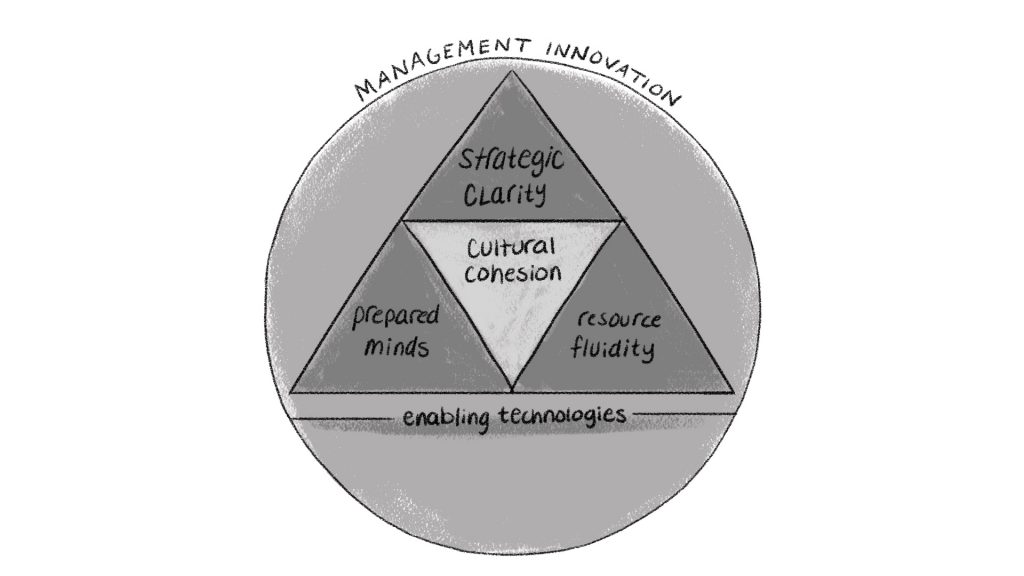“Weekly Picks” (August 12th)
Here are our top picks of articles on Strategy Execution for the week ending Thursday, August 12th. Enjoy!

MANAGEMENT INNOVATION
From Node to Link
by Joshua Emig (Network Communities – Medium)
adaptable comment: As the world continues to explore more distributed models for business (ecosystems, virtual workspaces, factional workers, etc…), the domain of network graphs seem critical to the way that we approach and understand our organizations. The VIDEO at the bottom of this short, summary post is worth watching and studying. Pay special attention to the idea of trust and how it influences our need to convene, as well as the two concepts of “bonding” and “bridging” which inform who and how often our organizations will need to convene physically. With the move to more virtual models of doing business, much reflection is needed to rethink how best to create a corporate identity and a set of value-creating information flows that increase our value to both our customers and our employees.
STRATEGIC CLARITY
Strategy as a Way of Life
by Ikujiro Nonaka and Hirotaka Takeuchi (MIT Sloan Management Review)
adaptable comment: Love this article and the authors focus on the “soul” of the organization – as strategy! The authors state “organizations are living beings with souls — invested in improving everyone’s prospects, not just their own…CEOs must start formulating strategy with their souls and then execute it with their brains”. To sum it up, don’t miss the mention of Tadashi Yanai (CEO of Fast Retailing, which operates the Uniqlo stores) who took a day and a half of his management team’s time to talk through the 23 management principles that he espouses in his leadership.
PREPARED MINDS
[no recommendation this week]
CULTURAL COHESION

Why Every Executive Should Be Focusing on Culture Change Now
by Rose Hollister, Kathryn Tecosky, Michael Watkins, and Cindy Wolpert (MIT Sloan Management Review)
adaptable comment: For years, we have been thinking about how to create organizations that are adaptable to dynamically changing markets and unexpected disruptions. I can’t agree more that organizational culture is at the core of doing so. This article walks through what the authors deem to be the 7 elements of an adaptive culture, and, then, it goes on to explore the challenges of evolving culture over time. Many leaders think that culture is obvious – but that’s because it lives within their heads! However, we need more leaders to reflect on and broadcast the vital behaviors and dynamic processes that support an adaptable culture. We should all bounce our organizational culture up against these principles as well as measure our leaders by their efforts to build such a culture.
RESOURCE FLUIDITY
[no recommendation this week]
ENABLING TECHNOLOGY
The Digital Twin Opportunity
by Pushkar P. Apte and Costas J. Spanos (MIT Sloan Management Review)
adaptable comment: I’m on the bandwagon of “digital twins”. A digital twin is “a [digital] model describing the behavior of its physical twin, and sensors that provide the real-time “coupling” to the model.” As this article mentions, we witnessed the use of a digital twin in the movie, Apollo 13, when we watched astronauts working in a simulator trying to construct a sequence to safely land the ailing spacecraft of their colleagues. Though the idea of digital twins is far from being a new concept, the reality of its use has only recently begun to be realized – due to the now ubiquitous data, cheap storage, and fast CPU speeds. This idea of digital twins is only going to gain prevalence within our companies.
